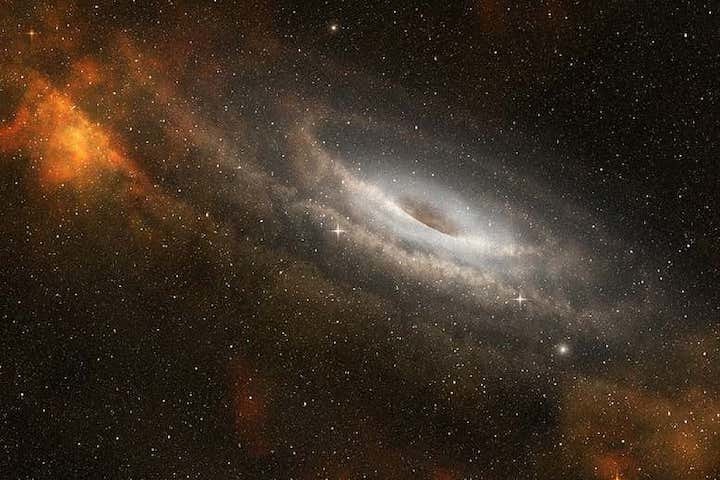30.07.2021

Supermassive black holes have such an intense gravitational pull that they bend light right around them, allowing us to see an “echo” of the side that would otherwise be hidden from view. We have now seen echoes of X-ray bursts from behind a black hole, confirming a prediction of general relativity.
The area around a black hole has three main parts: the event horizon, which isn’t solid but is commonly considered the black hole’s surface, the accretion disc where material accumulates before it falls in and the corona, a cloud of superheated particles just outside the event horizon. In some supermassive black holes, the corona can emit powerful flares of X-rays.
Dan Wilkins at Stanford University in California and his colleagues used the NuSTAR and XMM-Newton X-ray telescopes to observe these flashes of radiation coming from the supermassive black hole in a galaxy called I Zwicky 1. They saw that a flare of X-rays was sometimes followed by a second, slightly dimmer flash as the radiation bounced off the accretion disc in a sort of echo.
Astronomers have spotted these echoes before, but this is the first time they have been able to see echoes from the area of the accretion disc directly behind a black hole. “If we think about it naively, it should be hidden from our view, but because of the strong gravity of the black hole, these echoes are being bent so we can see them,” says Wilkins.
This confirms a prediction from Albert Einstein’s general theory of relativity about how light should behave under the influence of extreme gravity. The ability to see echoes from behind a black hole could also give us a new perspective on how accretion discs – which are some of the brightest objects in the sky – work.
“The gas falling into supermassive black holes plays an important role in the development of galaxies as we see them today,” says Wilkins. “So in order to understand how galaxies form and how we got here, we have to develop a real understanding of these extreme objects.”
Quelle: NewScientist
